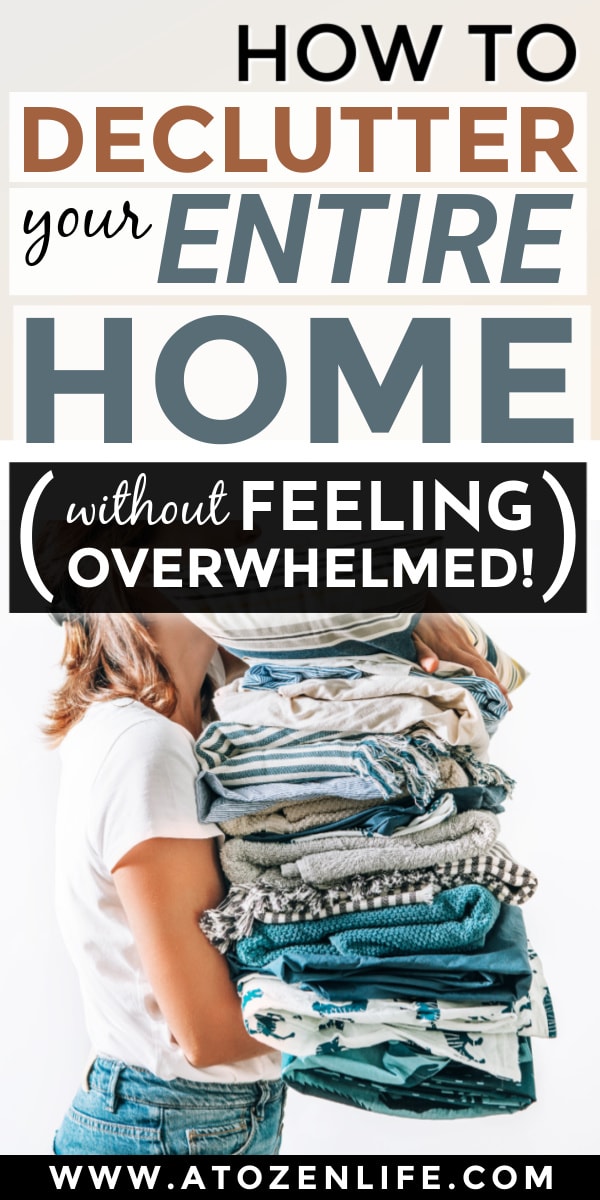How to Declutter: Expert Guide to Purging an ENTIRE Home [FREE PDF]
This post may contain affiliate links for your convenience. That means that if you make a purchase, I will receive a small commission at no extra cost to you. Read more here.
Do you feel you’re fighting a never-ending battle against clutter and mess – and losing? If so, it may be time for you to declutter. But what’s the best way to declutter your home? And what do you do if you get to the point that you’re up to your eyeballs in junk and just about ready to scream into the ether: “PLEASE, HELP ME DECLUTTER!”
Think of this as the ultimate guide on how to declutter your entire house; we’ll discuss steps to declutter, tips and tricks for clearing clutter, and you can also grab a free decluttering checklist to help make the process easier!
No matter if you’re a beginner at decluttering or someone a little further along, there are sure to be plenty of helpful tips and insights to help you create a clutter-free home and life you love!
But before we dive into the decluttering steps and tips, let’s walk through all the benefits and challenges of decluttering so you can go into this powerful, exhilarating, complex, and sometimes frustrating process with your eyes wide open, holding all the tools you need to find decluttering success.
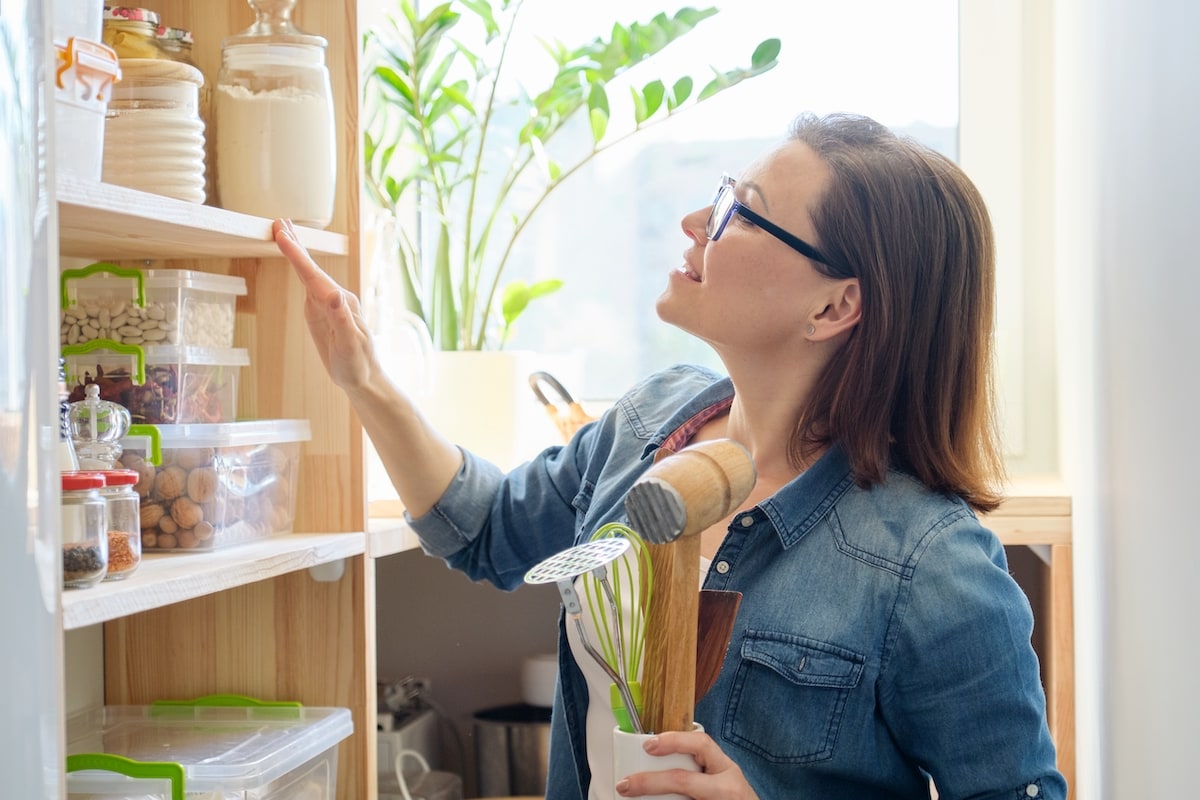
What are the benefits of decluttering your home?
There are so many benefits of reducing clutter in your home, from anecdotal benefits (“I found my true purpose in life!”) to scientifically documented benefits (“Children who have fewer toys play longer and more creatively!”).
Here is a list of decluttering benefits you might be surprised to encounter as you declutter your home.
- Clean less
- Reduce stress and anxiety
- Spend less
- Save more money
- Improved sleep
- Happier marriage
- Brighter and more creative children
- Increased life satisfaction
⭐️ READ MORE You can find more information about the benefits of decluttering, downsizing, and minimalism and links to the studies mentioned in this blog post.
What are the challenges of decluttering?
We can’t talk about the benefits of decluttering without acknowledging the challenges and struggles behind the scenes. I don’t want to sugarcoat it because I’m here to be honest with you and share the good, the bad, and the ugly!
As someone who extreme decluttered her entire home down to eight suitcases and has guided thousands of other people along the path to decluttering or living minimally, I know all about the trials, triumphs, and tears that go along with decluttering your life.
In early 2022, I surveyed my email list of over 20,000 aspiring clutter-clearers and asked them this simple question: “What is currently your BIGGEST challenge in simplifying your home right now?”
Here are the most common responses:
- Lack of motivation – 24.6%
- Re-cluttering or bad money habits – 24.7%
- Decluttering (physical, mental, or emotional aspect) – 20.6%
- Keeping up with my daily to-do list – 15.6%
- Lack of time – 12.1%
Top struggles in decluttering a home
- Motivation. Lack of motivation can have many underlying causes. People lose motivation when a task seems too overwhelming or too far out of their reach, and they feel spread too thin or get burnt out. Low motivation can also be a symptom of anxiety, depression, or other mental health issues that are much more common than people realize.
- Re-cluttering and bad money habits. If you think decluttering is a one-and-done deal, I have bad news for you, sis. If you don’t change up the behaviors and practices that lead your home to become cluttered in the first place, you’ll find that it goes right back to the way it was before too long. Often that means you need to swap poor money habits (retail therapy, impulse spending, ignoring debt, etc.) with positive habits that support a clutter-free and intentional life.
- Decluttering. The actual act of decluttering a house has its ups and downs, which can be physical, mental, and emotional. All of us have good and bad days; you might go to sleep excited and pumped up to declutter the next day but then wake up with a bad cold. Sorting through my sentimental items was emotionally draining as I spent hours sorting and crying over things like my deceased mother’s broken jewelry box and the pants with holes in the knees that my kids had outgrown. Decluttering can be hard for so many reasons. (Here are 20 of them, if you don’t believe me!
- Time and to-do lists. It can be challenging to find time to declutter around work, children, partners and spouses, or if you have a caregiver role for your elderly parents or sick friends. All of those reduce the free time you have to put towards decluttering. Not to mention all the chores and errands on your to-do list – those things don’t just disappear when you decide to start decluttering! Meal planning and grocery shopping, in particular, seem to suck up a lot of my follower’s time.
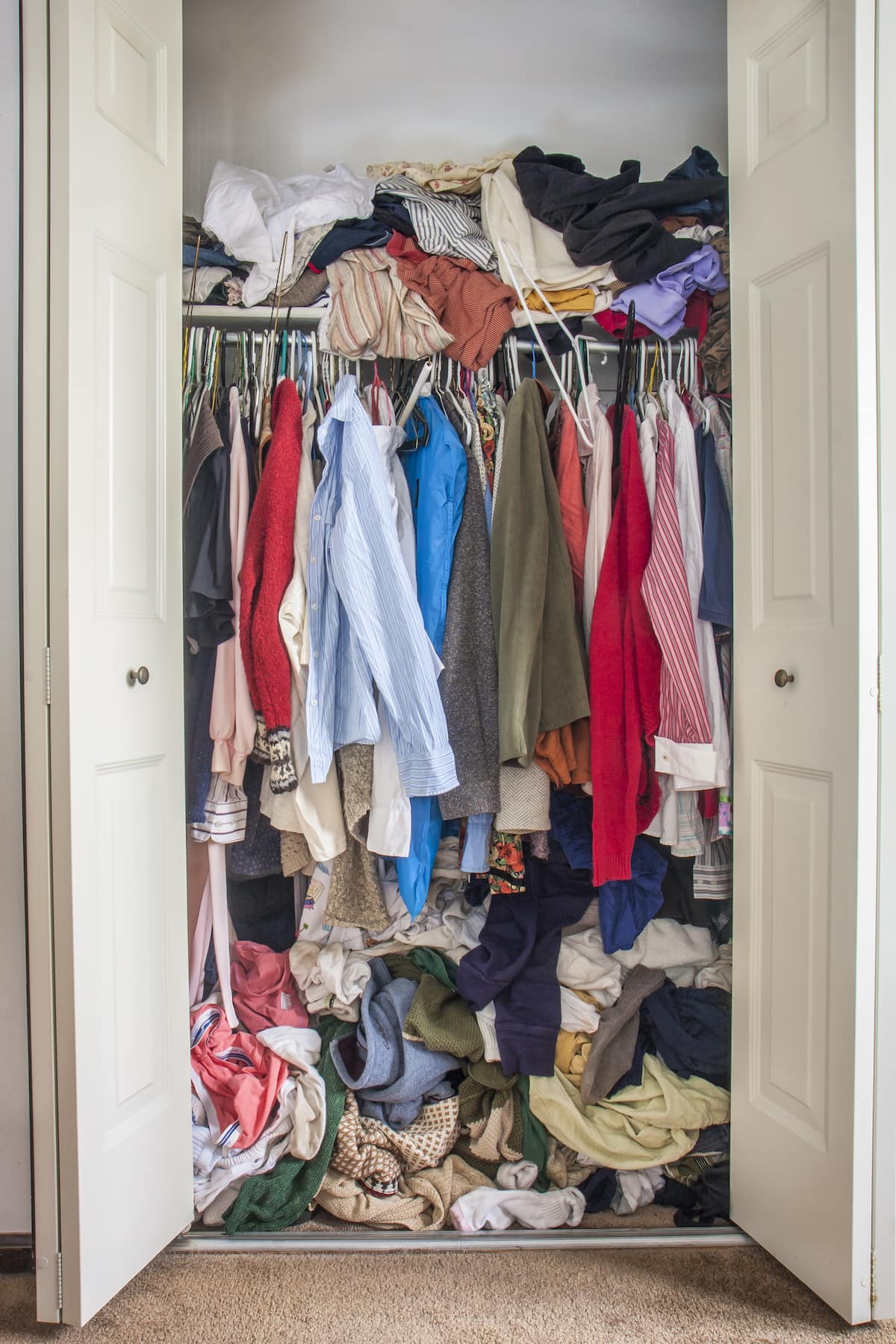
How to Start Decluttering
Friend, I know it might seem like an impossible, overwhelming, and insurmountable task to you right now.
I want you to know these ideas and tips to declutter aren’t coming from someone who has always been neat and tidy, who always had a gorgeous and well-organized home, and who didn’t have a lot of stuff to start with – no, no, no!
I am what most people would probably call a naturally “messy person,” and on top of that, I had DECADES of clutter to clear, not only from myself and my children, but from my parents, relatives, and friends I had lost along the way.
Along the journey to let go of 30 years of clutter I’d been hoarding following the loss of my family and my childhood home, I accidentally became a minimalist – and it changed my life!
Please don’t get scared or intimidated by the word “minimalism” because I’m not saying that you must go full-on minimalist to reap all the benefits of decluttering. (What most people think of as minimalism is more about the aesthetic vs. the lifestyle – read more about the difference here.)
No matter what, in the end, it’s your choice how much you declutter and how far you go along the path to minimalism. I might be a minimalist, but that doesn’t mean you have to become one yourself; I’m still confident that these declutter tips can help you!
The best way to start decluttering is to have a plan and break the process down into small, bite-sized chunks – even before you start! And then, when things go wrong, or you get stuck and begin to lose motivation, all you have to do is go back to the plan.
“It is your commitment to the process that will determine your progress.”
James Clear, Atomic Habits
Where to start decluttering?
So what’s the best place to start decluttering, anyway? The truth is, there’s no right or wrong answer to this question.
Here are a few popular options, and you can choose the best for yourself.
- Declutter clothing. In the KonMari Method of decluttering, Marie Kondo advises decluttering by category instead of location, and clothing is always the first place people should start clearing clutter.
- Start with a junk drawer. Many decluttering coaches and bloggers will ask you to start decluttering with a junk drawer. That’s because it’s a small and manageable location where you can get an easy win, giving you a boost of positive reinforcement to continue your decluttering momentum.
- Purge your bathroom. The bathroom is another common place to start decluttering. Most decluttering experts will tell you that there isn’t much sentimental in the bathroom.
- High-volume items. This is great for super motivated beginners! Instead of starting small, why not think BIG? Removing high-volume items from your home frees up large amounts of space quickly and with minimal effort; think big furniture pieces like china cabinets or, if you’re like me, dozens of tubs of collectibles that are collecting nothing but dust in the basement (yep, I’m side-eyeing you, Barbie.)
- The A to Zen Life Method. I’m going to keep this one a secret for now, but let’s just say I have my own ideas about where to start decluttering, and I hope to share more details on this soon. 🙂
Entire home declutter YouTube video
The good news is that decluttering does get easier the more you do it. It used to take me hours, weeks, and months to declutter and get rid of it all; now, I can speed declutter my entire home in 30 minutes!
Check out the video below for proof.
5-Step Guide to Declutter Your Home
1. Visualize your success
Visualization is powerful and has been used over the centuries in all sorts of ways, from training top-tier Olympic athletes to the meditations of Buddhist monks. Leonardo Da Vinci called his scientific visualizations “sapere vedere“, translated from Latin as “knowing how to see” and through this process, he honed his skills to become a master painter, engineer, scientist, and genius inventor.
This might seem a little woo-woo to you, but hear me out about this with an open mind and heart. Before you open your drawers or closets and start pulling stuff out, take a moment to turn inwards and ask yourself: “What do I want for my home and life?”
Many people are just going through the motions, hurrying through their daily life without putting much thought into what they are doing or why. They’re just running on autopilot.
It’s time to turn off cruise control and take back the wheels of your life so that you can stop simply managing your life and start living it!
Maybe you aren’t used to thinking about what you want. Perhaps you’re even a little afraid to allow yourself to hope and dream of a tidy home and happier life – I know I was skeptical!
Here are a few ideas to help you visualize your dream home and life.
- Journal about your goals.
- Make a list of what you want to accomplish.
- Draw up a contract to yourself, sign it, and tape it somewhere visible.
- Start a Pinterest board for decluttering motivation. (Follow me on Pinterest here.)
- Save quotes that inspire you.
- Create a vision board (physical or digital).
READ MORE: Here is a complication of the greatest decluttering quotes of all time to help you stay inspired and motivated.
2. Make a plan
The decluttering process will be a lot easier if you have a plan. Without one, it can feel like an overwhelming and never-ending task. But with a decluttering plan, you can focus on one area at a time and make decluttering your home feel more manageable.
When you declutter, start with the end in mind. That means you make things easier by preparing boxes, bins, or bags in advance and labeling them according to their removal category.
That way, when you are decluttering, all you have to do is pick up the bags or boxes and send the clutter on its way! Sorting categories may include any or all of the following.
- Sell
- Donate
- Give away or regift
- Recycle or trash
- Re-home
declutter planning Questions to Ask Yourself
Besides preparing boxes and bags to sort the clutter, here are more questions to ask yourself to create a decluttering plan that fits into your schedule.
- How much time do I have I put towards decluttering? Minutes or hours? Daily, weekly, or monthly? (Be honest!)
- How will I get rid of the stuff after decluttering? (Sell or donate? Repurpose or give away? Find 50+ options here.)
- What will you do if something “goes wrong”? (What if your kids get sick and need to stay home? What if you lose motivation? What if it takes longer than expected? THINK AHEAD!)
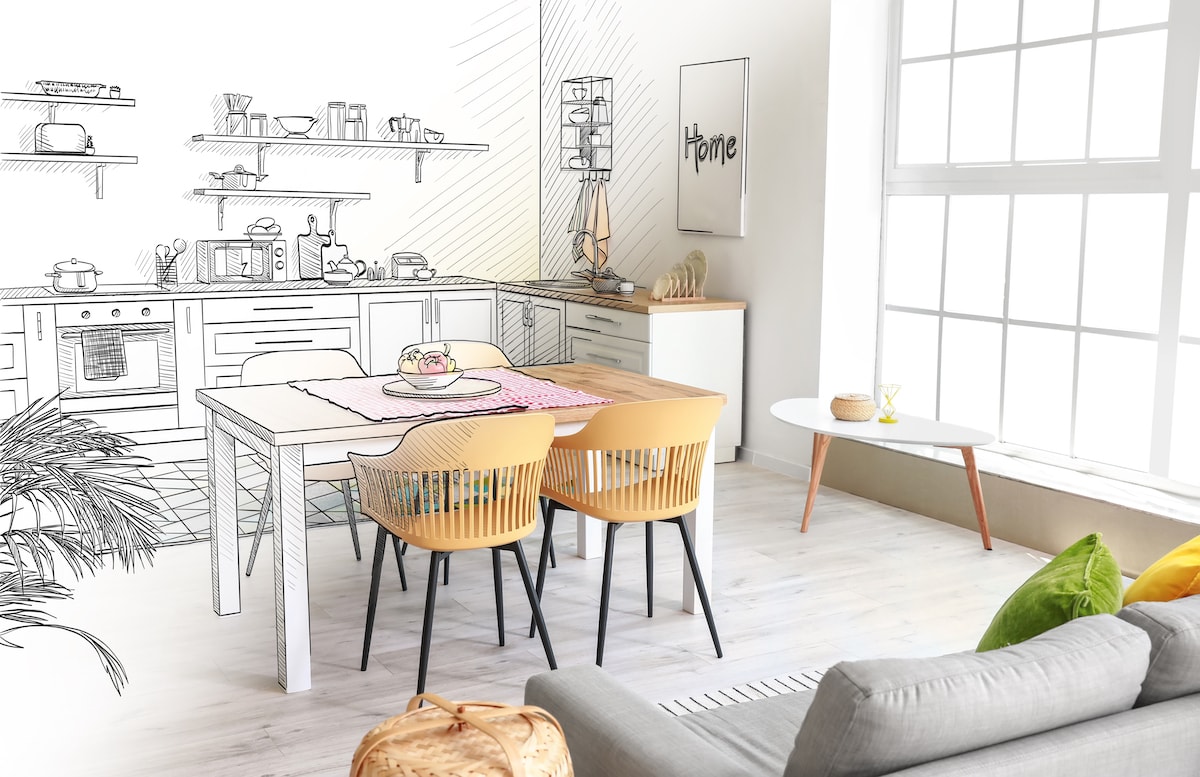
3. Declutter
Okay, so now you know where you want to start decluttering. It’s time to tackle the clutter in your home, decluttering room by room or category by category.
But wait!
There’s one more thing I want you to do before you start: set your intentions for each room.
How to set intentions for decluttering
Setting your intentions means standing quietly in each room, looking around at what’s working and what isn’t, and mindfully considering how you want the space to feel and what purpose it should serve in your life.
This might sound like a no-brainer to you, but you’d be surprised at how often rooms get out of alignment with their intended purpose. How often has your dining room table become a catch-all for piles of mail, bags of stuff you want to return to the store, kids’ homework and art projects, and more?
And if my closet is supposed to be a tidy space to store my clothes with care, why am I using it to store plastic tubs filled with all my college books, notebooks, and every scrap of paper I’ve ever touched? (Yes, I was 100% guilty of this!)
How to Declutter
Remove all of the items in each room according to location and how much time you have planned into your decluttering schedule. If you only have 15 minutes to declutter, you might start with the top drawer of your dresser, but if you’re doing a decluttering sprint, you can pull out your entire wardrobe and put it on the bed.
Pulling it all out is essential because: a) it forces you to confront your clutter and acknowledge your cluttering habits head-on, and b) it allows you to take before and after photos to help you document your progress and stay inspired!
Just ensure you stick to your decluttering plan and don’t bite off more than you can chew!
Pick up each item and ask yourself if you want to keep it or let it go. Try and make the process as automatic as possible – if it’s not a solid yes, then it’s probably a no. If you get stuck, you can refer to this list of decluttering questions to ask yourself (all of which are in the free decluttering checklist printable, FYI.)
Put the keepers right back into their place and move on to the next step.
BE INSPIRED: If you love a good before and after, here is a roundup of incredible before and after decluttering photos that will drop your jaw!
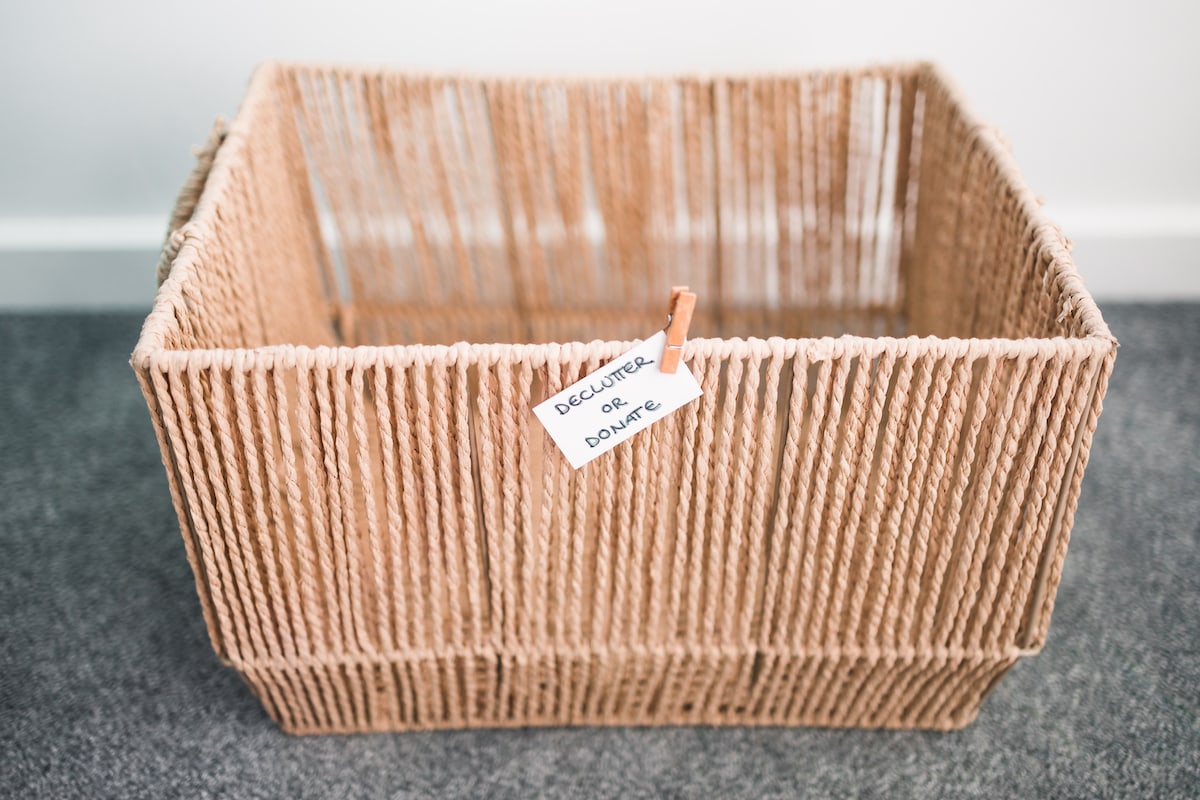
4. Re-home or let go
After you’ve finished decluttering, it’s time to put what’s left back in order and get rid of the rest. Remember, the less you have to store and organize, the easier it is to keep things clutter-free and tidy.
If you’ve found items in the wrong place while decluttering, go and re-home them now. Try to ensure that each item has its own space and that everyone in the home knows where it goes; if an item is removed from its designated space, it needs to go back once it’s been used. Ideally, this should be by the person who did the removal, but it can take some time to teach children to do this – but it’s so worth it!
It’s also time to send clutter on to their new homes, which should have already been pre-determined by you and sorted into the appropriate bins.
Should you choose to sell clutter, pick one space in the home for that, and don’t keep clutter too long. It helps to set “sell by” dates for clutter, so you’re not just storing stuff you already decided to get rid of indefinitely in your home.
Get that clutter out of the door as fast as you can!
RELATED POST: 20 Genius Tips to Declutter Fast (That Are Low-Effort and Stress-Free)
5. Roadtest
I wanted to call this section “stress-testing” because you need to ensure that your results stand up to the reality of daily life in your home, but I thought that word was a bit too stressful.
Go ahead and move forward to declutter the next space, but pay attention to what you’ve done in the past spaces and if the results function well for your family. Don’t be afraid to change things up if they are not working!
Maybe you tried a new organization bin, but it didn’t work out like expected, or you moved to a new home and the new kitchen isn’t laid out like your old one, or your son took up ice hockey, and you have tons of new gear to store.
Whatever the case may be, just keep moving forward. Problem-solving and adapting are ESSENTIAL to keeping your home clutter-free!
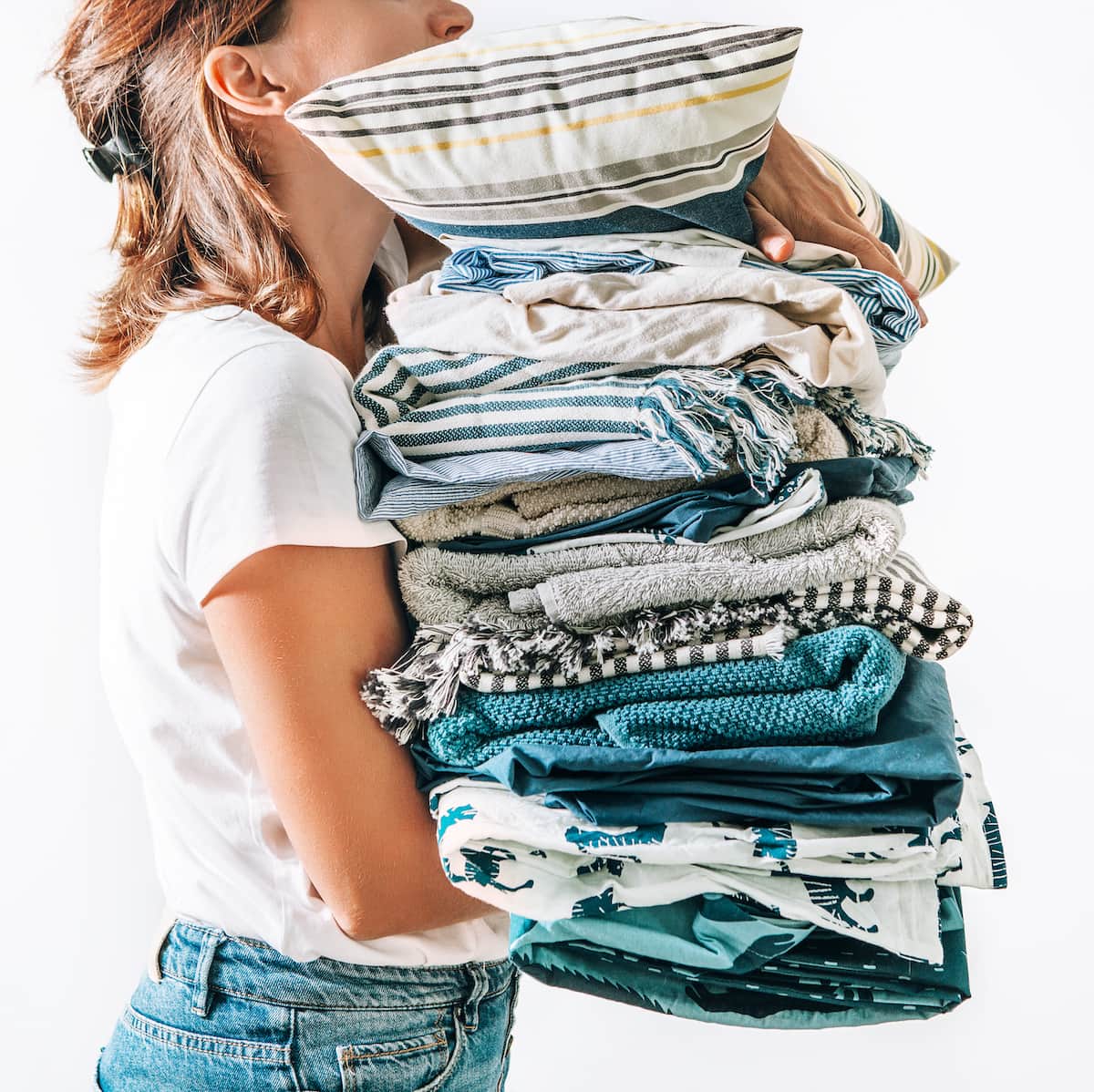
10 Bonus Tips and Tricks to Declutter and Organize Your Home
Now that you have the mental tools and a step-by-step guide for decluttering your entire home, here are a few more decluttering tips, tricks, and hacks to get rid of clutter and make organizing your home a lot easier for yourself.
1. Start with your favorites. Pull out and set aside things you know you love and items you use daily. Focusing on the keepers makes it much easier to identify and let go of the rest. (In fact, that’s the #1 tip in this roundup of the top closet cleanout ideas!)
2. Take out the trash. Dig into your pantry and drawers and pull out all the stuff that’s broken, used up, or just plain trash. If you have junk drawers full of pens with no ink, pantries with expired food items, and empty boxes around your home, it’s time to toss or recycle them!
3. Get rid of duplicates. No one needs five spatulas or three complete sets of dinnerware and utensils. Likewise, is it worth keeping ten pairs of black leggings or allowing seven pairs of winter coats to take up space in your home?
4. No such thing as a “special occasion.” You either use the grandma’s beloved fine china, or you don’t. Remember, special occasion items aren’t special if you never use them; either get them out of the cupboard or send them on to a new chance at life in someone else’s home. Regarding holiday stuff like Easter egg platters or funky Christmas sweaters, it’s okay to keep them in moderation as long as you use, enjoy, and have room to store them in the off-season.
5. Say goodbye to fantasy self items. Cookware or appliances you never use, books you don’t enjoy reading, hobbies you don’t have time for, clothing that doesn’t fit you; all of these things are fantasy self items, and letting them go will help you embrace your authentic self and stay true to you – the real you! (You can read more about fantasy self items in this blog post because many people get hung up on this one!)
6. Keep countertops clear. Cluttered countertops are anxiety-inducing, so do your best to keep visual clutter to a minimum. Store as much as you can out of sight in drawers and cupboards and use containers to corral the stuff you use daily basis that needs to stay on the counter.
7. Go vertical. Vertical storage isn’t just for folding clothes! Storing things vertically means you can see everything at a glance, and it works in so many areas
- store containers upright with the lids on
- store paperwork and files vertically in organizing bins
- store holiday items and keepsakes upright in containers, using extra boxes to sort further
8. Clean as you go. As you declutter drawers, pantry, and cabinets, please take a few moments to dust and wipe them out before putting things away. It’s a great chance to clean the inside of your drawers!
9. Repurpose and upcycle with caution. I’m all for using what you have and upcycling or repurposing items into new things. However, it would be best if you were realistic about whether it’s worth your time and energy. If you can’t find a new home or use that item immediately, just let it go.
10. Set rules for yourself. Set boundaries for yourself and your clutter and stick to them. The one-in-one-out rule is a great way to maintain balance in your home with an even ratio of stuff in vs. out. Likewise, the one-touch rule is super helpful for paper clutter; trash or recycle unnecessary papers immediately and sort the rest in a designated area in your home.
READ MORE: 20 Decluttering Rules the Experts Say Are “Life-Changing”
Final Thoughts on Decluttering
As you learn how to declutter your house, keep a positive attitude. Visualize how peaceful and freeing it will feel to live in a clutter-free home. Keep focusing on your goal, and you’ll be more likely to reach it!
If you want to know more about minimalism and whether or not it’s right for you, check out this post for a run-down of the basic principles of minimalism.
Have a decluttering story to share? Ready to sing the praises of minimalism? Drop us a comment below – you might help or inspire someone else in the future!
Grab your free 10-page declutter checklist here, and happy decluttering to you!
Pin these tips to declutter to read again or share!
